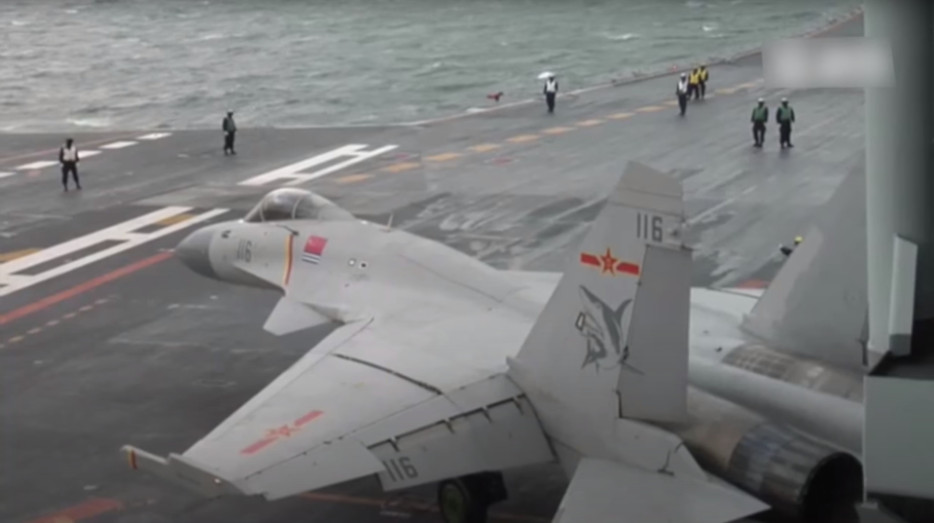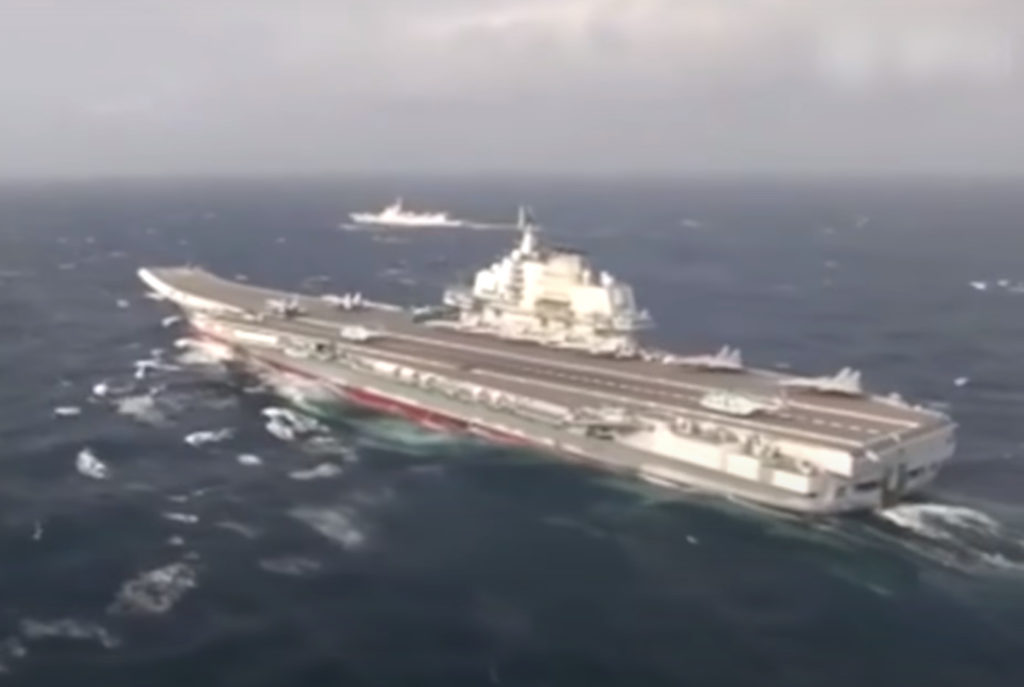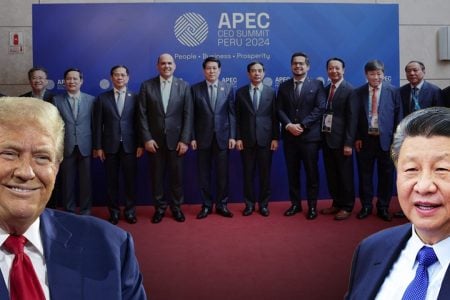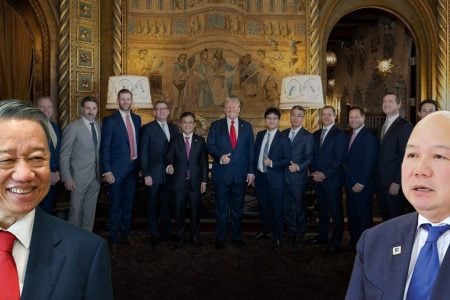
Military drills and missile shootings
The summer of 2020 saw strong activity by both the US and Chinese navies in the East Sea (South China Sea). Two groups of US aircraft carriers operated together in the South China Sea at least twice in July 2020 in a move to gather rare forces from the US Navy. These carrier groups subsequently operated independently in the South China Sea and surrounding areas during the summer. China conducted naval exercises in the South China Sea in July and August 2020.
Recently, the South China Morning Post has just quoted a military expert, a former Chinese officer, revealed two missiles of the „carrier killer“ that the People’s Liberation Army fired in the South China Sea during the exercise in August 2020 flew thousands of kilometers into the assumed target of a moving ship near the Hoang Sa (Paracels). This information comes almost three months after the exercise took place.
DF-26B and DF-21D ballistic missiles are launched from Qinghai province in the northwest and Zhejiang province in eastern China. According to former officer Wang Xiangqi, now a professor at Beihang University in Beijing, these two missiles hit a moving ship south of the Paracels, where Vietnam claims sovereignty. Wang Xiangqi said: “Shortly thereafter, an American military attaché in Geneva complained to us and said that this could have serious consequences if the missile hits an American carrier. They see this as a show of force. But we are doing this because of their provocation.”
Wang Xiangqi’s revelation marks the first time China has given details about the launch of two DF-26B and DF-21D missiles in the South China Sea in August. The mention is believed to be related to Beijing’s declaration about an American U-2 spy plane entering a no-fly zone without permission during a Chinese naval exercise in the Bohai Sea off its northern coast.
Professor Ngo Vinh Long of the University of Maine (USA) said that the disclosure of the former Chinese colonel’s information „to scare countries in the region only, not to intimidate the US. It takes a very long time for China to be able to operate an aircraft carrier and there must be many other warships around. China has only two aircraft carriers recently, so it cannot be compared with the US. The US has aircraft carriers long time ago and is constantly using them.“
The exercise marks the first time that China has demonstrated the actual long-range anti-ship ballistic missile capabilities, while the details are still unclear, such as the hypothetical target ship, construction, and speed as well as its movement or the way the Chinese military controls the missile to the target.
The language of war in the Congress Document
The 5th Plenum of the Central Committee of the Communist Party of China ended as scheduled this past October – after four days of caucuses in the Chinese capital Beijing, with the joint communique being released for socialist jargon that outlined the country’s future development priorities. However, among the more than 6,000 words of that statement, there was the phrase „preparing for war.“ This phrase appears in the section about increasing the army and speeding up its modernization.
Specifically, the statement said that at the 5th Plenum, the Chinese Communist Party emphasized the need to comprehensively strengthen military training and preparation for war and improve its combat capabilities and military strategy to protect sovereignty, security and interests related to the development of the country.
The phrase „preparing for war“ once again appeared in a series of proposals by the Central Committee announced recently. These recommendations supplement the details of China’s 5-year plan and 15-year vision statement. Observers of China have pointed out that this is the second time in more than half a century that the new phrase „preparing for war“ has appeared in a Chinese 5-year development plan.
The phrase’s most recent appearance was in China’s Third Five-Year Plan (1966-1970) when Chinese leader Mao Zedong called on the country to prepare for war and famine. The 1960s were a period of tension, when Sino-Soviet relations were serious and China was also in a border conflict with India.

The emergence of this phrase in the document of this 5-time Plenum – along with what some analysts are referring to is a new deadline for PLA modernization ahead of its 100th anniversary in 2027. It is also a sign of widespread recognition among the top Chinese leaders of the deterioration of the external environment and the urgent need for the PLA to prepare for war.
Over the past few years, Beijing has been developing modern weapons and platforms, including the DF-17 supersonic missile, the J-20 stealth fighter, and the domestically-built Type 001A aircraft carrier. In particular, the PLA Navy has been building many new ships at an impressive speed. „From 2014 to 2018, China launched submarines, warships, landers, and ships,“ said a study named China Power Project of the Center for Strategic and International Studies (CSIS), adding China has more ships currently in service in Germany, India, Spain and the UK.”
Threats to regional security
One of Beijing’s primary goals is to increase combat readiness and the ability to defeat enemies like the US in potential conflicts in the South China Sea or Taiwan. To do so, experts say China will increase military spending from 2021, even though its economic growth this year is at its lowest level in decades.
However, a more aggressive China would also cause concern for its neighbors. In 2019, Tokyo identified China as Japan’s biggest national security threat, and laid out plans to increase defense spending ahead of China’s military modernization and to buy weapons of America.
In past July, Washington passed an agreement to sell 105 F-35 stealth fighter jets to Tokyo. Not only Japan but also China’s peripheral countries such as South Korea, India and Southeast Asian countries can respond in a similar manner and equip themselves. This could lead to an arm race here.
Washington has a number of treaty allies in the Pacific such as Japan, South Korea, the Philippines, and Thailand. According to the Law on Relations with Taiwan, the US is committed to ensuring the security of the island. And this is a dilemma for Beijing.
Chinese expert Nghe Lac Hong commented: “The rapid development of China’s military power and the implementation of the current tough foreign policy will make other countries fear and hope the US strengthens its presence in the region. This is contrary to what China wants. For Beijing, however, military modernization is an option.”
Increasing the militarization of the region has also increased the likelihood of bored stations between the various forces operating in the South China Sea, East China Sea and the area along China’s land border. The main concern for military observers is a low-level conflict that could escalate and go out of control, such as the recent Galwan valley conflict and the EP-3 spy plane’s incident. The US collided with a Chinese F-8 fighter jet on Hainan Island in 2001.
Is Vietnam the target?
In an article from 2019, journalist David Hutt said that if there was a war in the South China Sea, Vietnam would be the first target that China attacked. Based on the analysis of experts cited by David Hutt, Vietnam will be chosen by China to fight as a way to „warm-up – heat up“ before plunging into a larger war with the US in the South China Sea.
Derek Grossman, a defense analyst at RAND, a Washington-based consulting group, has made the same argument that if China launches a military strike in the South China Sea, the opponent of choice is most likely Vietnam because Vietnam was just a country with medium strength, so the Chinese army could easily win, but it was not easy for China to defeat the American army at sea.
Therefore, Vietnam needs to prepare all kinds of options to cope, even if it is a war situation.
Thoibao.de (Translated)
Source: https://www.rfa.org/vietnamese/news/blog/is-china-preparing-for-a-war-11202020110102.html


























